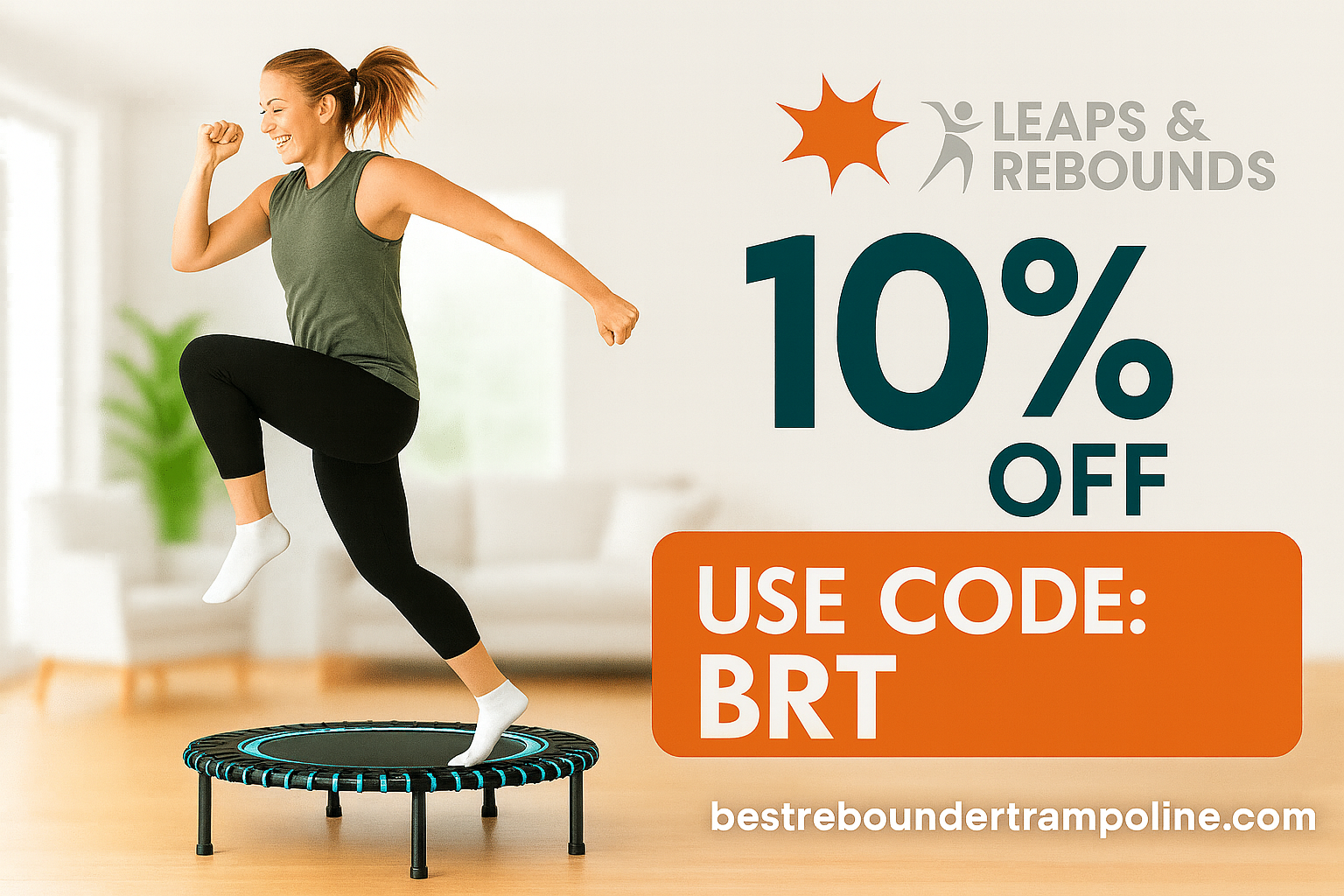What is the downside of rebounding?
Rebounding on a trampoline can be super fun, but it’s not all perfect. One of the biggest drawbacks of rebounding is the risk of injury. If you’re not careful, you might twist an ankle or even fall off the rebounder. It’s important to use proper form and start slow to avoid these issues.
Physical strain and joint impact
Another thing to consider is the strain it can put on your joints. While rebounding is low-impact compared to running, it still involves repetitive bouncing. This can be tough on your knees, hips, or back if you already have joint problems. Always listen to your body and take breaks when needed.
Some people also find that rebounding can make them feel dizzy or nauseous, especially if they’re new to it. The up-and-down motion might not agree with everyone, and it can take time to get used to. Starting with shorter sessions and gradually increasing the duration can help reduce this rebounding downside.
Lastly, not all rebounders are created equal. A poor-quality trampoline can make the experience less enjoyable and even unsafe. Investing in a high-quality rebounder with good bounce and stability is key to minimizing these disadvantages of rebounding.
What is 10 minutes on a rebounder equivalent to?
Jumping on a rebounder trampoline for just 10 minutes can feel like a full workout. It’s like running for 30 minutes but without the strain on your joints. The gentle bounce helps your body move in ways that’s both fun and effective. You’ll be surprised how much energy you burn in such a short time.
How does it compare to other exercises?
Ten minutes on a mini trampoline equals about 20 minutes of jogging or cycling. The up-and-down motion works your muscles more than you’d think. It’s not just cardio; it’s also great for balance and coordination. Plus, it’s way more enjoyable than running on a treadmill.
Using a rebounder for 10 minutes can also be like doing a quick yoga session. It stretches your muscles and improves flexibility without holding poses. The low-impact nature makes it perfect for all fitness levels. You’ll feel refreshed and energized in no time.
Some say 10 minutes of rebounding is similar to 15 minutes of swimming. Both activities engage your whole body and boost circulation. The difference is, you don’t need a pool or special gear. Just a small space and your trampoline is all it takes.
FREE SHIPPING SELF-ASSEMBLY MODELS
How many minutes a day should you use a rebounder?
I think starting with just 5 to 10 minutes a day on a rebounder trampoline is perfect for beginners. It’s not too much, but it’s enough to get your body moving and used to the bounce. Over time, you can slowly increase the duration as your fitness improves. Consistency is key when using a mini trampoline for health benefits.
What’s the ideal time for regular users?
For those who’ve been bouncing for a while, 20 to 30 minutes daily is a good goal. This amount of time helps with cardiovascular health and improves lymphatic drainage. You can break it into smaller sessions if needed, like 10 minutes in the morning and 10 minutes in the evening. It’s all about what feels right for your body.
If you’re using a rebounder for weight loss, aim for at least 30 minutes most days. Mixing high-intensity bounces with slower, controlled movements can maximize results. Don’t forget to listen to your body and take breaks if you feel tired. Overdoing it on the mini trampoline can lead to soreness or injury.
Kids and seniors might need shorter sessions, like 5 to 15 minutes, depending on their energy levels. A rebounder workout should be fun and safe for everyone. Always start slow and build up your time gradually to avoid strain.
FREE SHIPPING SELF-ASSEMBLY MODELS
Is there a difference between a rebounder and a trampoline?
When I think about rebounders and trampolines, I notice they’re not the same thing. A rebounder is smaller and made for fitness, while a trampoline is bigger and used for fun. The size is the first thing that stands out to me. Rebounders are usually about 3 feet wide, but trampolines can be as big as 15 feet or more.
What makes a rebounder unique?
Rebounders are designed for low-impact exercise and are great for indoor use. They have strong springs or bungee cords that make bouncing smooth. I like how they’re portable and easy to store, which is perfect for small spaces. Plus, they’re often used for health benefits like improving balance and circulation.
How are trampolines different?
Trampolines are mostly for outdoor fun and can hold multiple people at once. They’re built with heavy-duty materials to handle lots of weight and rough play. I’ve seen trampolines in backyards and parks, and they’re great for kids and families. Unlike rebounders, they’re not as easy to move around or store.
Another thing I’ve noticed is the bounce quality. Rebounders give a softer, controlled bounce, which is better for workouts. Trampolines, on the other hand, have a higher bounce that’s more exciting for jumping tricks. The materials and design are tailored to their specific uses, making each one unique.

Community Coordinator
Linda Baker, our Community Coordinator, is the heart of our customer engagement efforts. With a background in social work and community management, Linda fosters a supportive and inclusive environment for all our rebounders.




